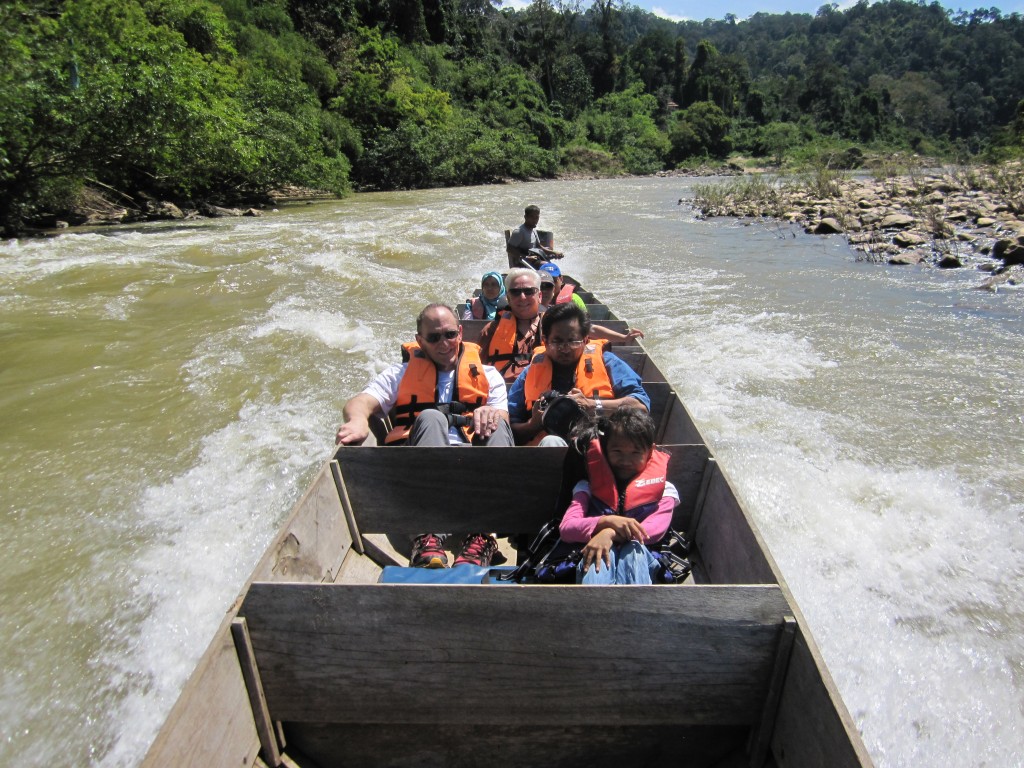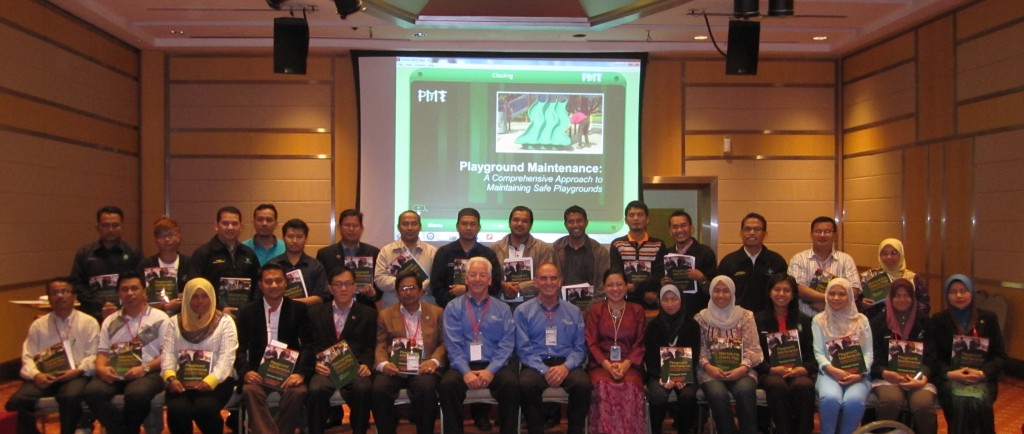
Our group, Tom and Ken along with, Patrick Lee of Singapore, and our hosts; Noriah, Liza, her daughter Amy, and Shahoran.


PMT Course Participants Celebrate Course Completion in front of Putrajaya Perbadanan Headquarters the training site.
Last year during the first CPSI Course in Malaysia I had the privilege to meet Datuk LAr. Haji Shahoran bin Johan Ariffin, a Fellow Member of the Institute of Landscape Architects Malaysia. Shahoran was an inspiration to us as he explained his vision for Putrajaya, the new government center of Malaysia. Shahoran has already retired from service to his government but is still very active in local government affairs, especially his friends in the Department of Landscape and Parks. Shahoran was the architect, or should I say Walt Disney, for the current capital government center for Malaysia. It is a world class display of various ministries and other government centers located in Putrajaya. This government center is about 25 miles away from Kuala Lampur’s big city congestion. Putrajaya was built around a very large man-made lake. The various Presints, as they spell it, that surround the lake are linked by iconic bridges, beautiful architecture of various styles each one more striking then the next. The lake has just about every type of water related recreation facility imaginable. Shorhoran received the title, Datuk. This highest honor was bestowed upon him by the King and Prime Minister of Malaysia for his special and significant service to the people of Malaysia. This special designation would be similar to being knighted.
I have learned that Shahoran is committed to the children of his country. He sees the importance of free play for children. He also sees the need for improved and well maintained play opportunities for all children. He sees and understands the work that lies ahead of his country as they move forward in providing the knowledge necessary through new training for their government employees. They are after all the ones who are responsible for designing and managing these play spaces. Some of their key leadership of Malaysia including Noriah Binta Mat the Senior Deputy Director and Shafini Ashraq Bin Karim, Senior Assistant Director for the Department for Landscape and Parks and Tiew Hai San, Undersecretary for the Ministry of Strategic Development requested IPSI return before the end of 2013 to repeat the Playground Maintenance Technician Program along with the National Recreation and Park Association’s Certified Playground Safety Inspector Course. IPSI looks forward to the next opportunity to share our experience and knowledge in area of playground management.
This trip has been a learning experience for me personally and for all the participants of both programs. We continue to learn from one another. We all have a better understanding and appreciation for our cultural differences and similarities. We have become good friends and I look forward to a long working relationship as we help them attain their vision for establishing a professional association of CPSIs for the purpose of establishing children’s play space guidelines and requirements within Malaysia.
I would like to share some of our experiences during our 10 day visit to Putrajaya and the Taman Negara Rainforest. Through breaking bread together we can learn a lot about one another. I can tell you from experience that they love their food and we certainly tried everything and enjoyed it all. Dining always involves conversation and through conversation comes more opportunities for the understanding and sharing of our common interests.
On our rainforest tour we experienced a bit of the day to day living of their “people of the jungle”. We watched young boys playing in the river and rapids along the shores of their village. No parents or lifeguards to be seen. We watched a very young boy start a fire with some twine made from forest plants and other materials all harvested from their backyard. We learned how they make their blow guns and watched them make the blow darts from many of the same materials. I even got to try my aim and test my lung capacity while shooting at a straw dummy with their blow gun. I guess I will need to buy my food at the supermarket. We learned how they make the poison for these darts from the forest plants for hunting purposes. Some of the young boys and men have become a part of the local ecotourism movement to help their village with needs not readily available in the rainforest. We saw many school groups visiting the area to learn about these people and how they live as one within their rainforest environment. Elementary school children from all over Malaysia and Singapore come to this place on special school trips learn more about these people and experience a bit of their way of life. Seeing these people challenges one’s believes and understanding of how we can all live on this planet. Our guide explained how some young people have left this way of life but for the most part many have tried to come out of the jungle and go to school only to return in a very short time to what they know, understand, and love the best. Knowing what they need to know to survive is taught at a young age. It is in a way available to them free of charge. The rainforest is their home and their childrens’ truly only all natural playground. Playful living throughout one’s life is how they survive.

